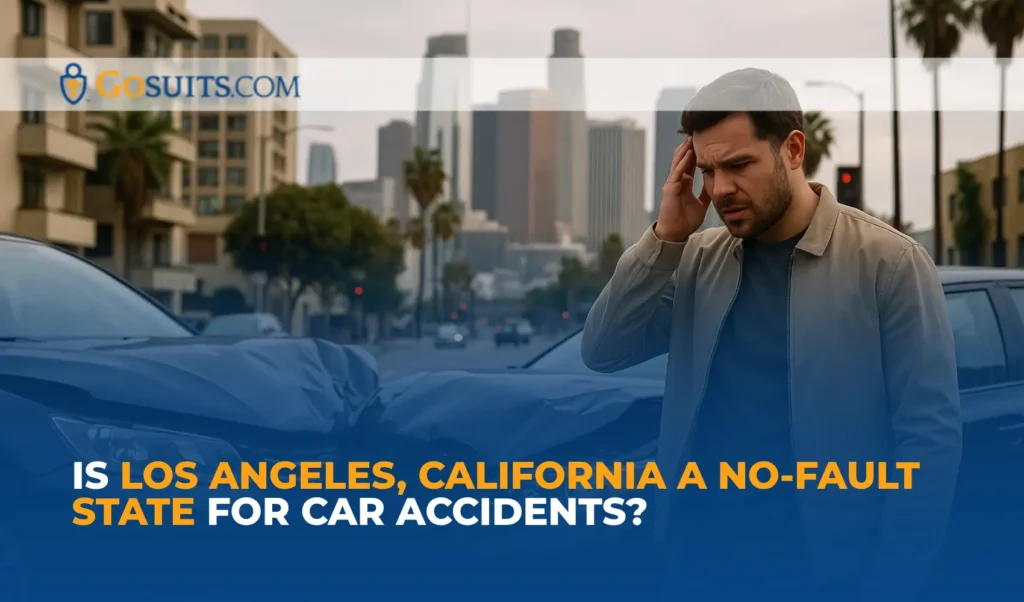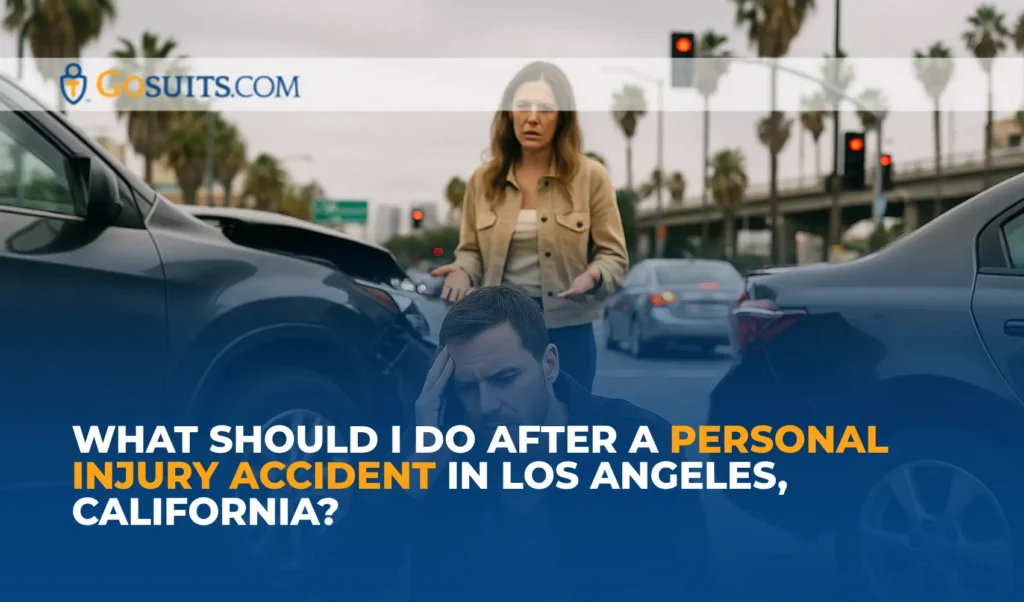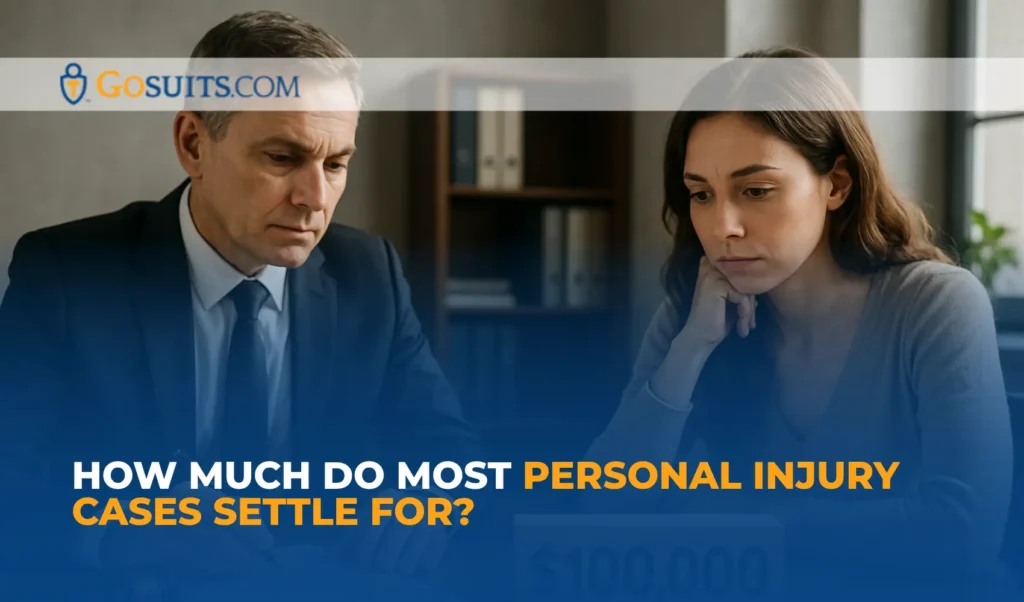Is Los Angeles, California a No-Fault State for Car Accidents?
No, Los Angeles, California is not a no-fault state for car accidents. California operates under an at-fault insurance system, meaning the driver responsible for causing an accident is liable for paying damages to others involved. This distinction directly impacts how claims are handled, who pays for damages, and what rights victims have when seeking compensation after a collision.
Understanding California’s fault-based system is essential for Los Angeles residents, as it affects your ability to recover full compensation after a car accident. Unlike no-fault states where drivers must initially rely on their own insurance regardless of fault, California allows injured parties to pursue compensation from the at-fault driver’s insurance or through legal action.
California’s At-Fault Insurance System Explained
California has a fault-based insurance system, also known as a tort liability system. The person responsible for causing an accident must pay for the resulting damages. Under this framework, injured parties can file claims with the at-fault driver’s insurance company or pursue lawsuits to recover compensation for:
- Medical expenses
- Property damage
- Lost wages
- Pain and suffering
This system is very different from no-fault states, where drivers must first seek compensation from their own Personal Injury Protection (PIP) insurance, regardless of who caused the accident. In no-fault states, only severe injuries or high medical bills allow suing the at-fault party.
Key Features of California’s Fault-Based System
- Pure Comparative Negligence: You can recover damages even if you were partially at fault. Your compensation is reduced by your percentage of fault. For instance, if you are 20% at fault for an accident with $100,000 in damages, you can still recover $80,000.
- No Damage Caps: There are no legal limits on the compensation you may receive for medical expenses, lost wages, or pain and suffering in California car accident cases.
- Right to Sue: Victims can file lawsuits against at-fault drivers for both economic and non-economic damages.
How Fault Is Determined in Los Angeles Car Accidents
Fault is established through careful investigation of a collision. To prove negligence, an injured victim must show the defendant owed a duty of care, breached that duty, and that the breach caused injury.
- Evidence Collection: Insurance adjusters and legal professionals analyze police reports, vehicle damage, skid marks, and vehicle positions. Photographs and witness statements also play important roles. In Los Angeles, determining fault often depends on documentation from local authorities such as the Los Angeles Police Department (LAPD) and the California Highway Patrol (CHP). These agencies investigate crash scenes, issue citations, and compile official accident reports that are critical in establishing liability. If your collision occurs on a major freeway like the I-405, US-101, or near dense intersections in Downtown LA, the responding officer’s report can be a key piece of evidence in your insurance or legal claim.
Los Angeles is one of the most traffic-congested cities in the country. Accidents frequently happen on busy boulevards, multi-lane freeways, and during peak hours. Areas like Hollywood Boulevard, the 10/405 Interchange, and Wilshire Corridor are specially prone to collisions involving multiple vehicles, cyclists, or pedestrians. These urban traffic conditions often add complexity to fault investigations, making it essential to preserve evidence and consult with a personal injury lawyer who understands the local landscape.
- Traffic Law Violations: Speeding, running red lights, distracted driving, and failing to yield are common indicators of fault, as are instances of impaired or aggressive driving.
- Expert Analysis: Accident reconstruction experts may be used in complex cases. If multiple parties are at fault, California’s comparative fault rules mean each party’s compensation will be reduced by their share of responsibility.
If multiple parties are at fault, California’s comparative fault rules mean each party’s compensation will be reduced by their share of responsibility.
Compensation Available in Car Accident Cases
Car accident victims may pursue compensation for both economic and non-economic damages. The total compensation depends on injury severity, medical expenses, lost wages, and the accident’s impact on the victim’s life.
Types of Damages:
- Economic Damages
- Medical bills (current and future)
- Lost wages and earning capacity
- Property damage and replacement costs
- Out-of-pocket expenses
- Non-Economic Damages
- Pain and suffering
- Emotional distress and mental anguish
- Loss of enjoyment of life
- Inconvenience and loss of companionship
- Punitive Damages
- Rare, but possible in cases of extreme negligence or reckless conduct.
Usually, the at-fault driver’s insurance company is responsible for paying settlements, though more than one company may be involved if fault is shared.
Legal Process and Documentation Requirements
Statute of Limitations:
- Personal Injury Claims: 2 years from the date of the accident.
- Property Damage Claims: 3 years from the date of the accident.
- Claims Against Government Entities: 6 months’ deadline.
Missing these deadlines can mean losing your right to compensation. Statute limitations may be extended in certain cases, such as those involving minors or individuals lacking mental capacity.
Evidence and Documentation:
- Retain medical bills, police reports, and other documentation.
- Memories fade and evidence can deteriorate, so take prompt action to support your claim.
The Claims Process in California
Since California is an at-fault state, injured victims must file claims with the at-fault driver’s insurance company. This involves confirming the responsible party and proving fault during the insurance process.
Essential Steps:
- Secure the other party’s insurance details and report the accident.
- Call 911 for police presence and file an official accident report.
- Notify both your and the other driver’s insurers.
- Seek immediate medical care to document injuries.
- Keep a file with all accident-related documents.
Insurance Coverage Considerations
Basic Requirements:
- All California drivers must carry liability insurance for injuries and property damage they might cause to others.
- Many drivers are underinsured or uninsured, so carrying uninsured/underinsured motorist coverage is recommended.
Medical Payments (MedPay):
- This optional coverage can pay for immediate medical expenses regardless of fault, helping you get treatment while fault is being determined.
Uninsured Motorist Protection:
- Insurance companies must offer this coverage, though drivers can decline it in writing.
- With many uninsured drivers in California, this coverage provides important financial protection following a collision.
When to Consult a Personal Injury Attorney
Given California’s fault-based insurance laws and the potential legal challenges, hiring a trusted personal injury attorney is often helpful, specially in cases involving severe injuries or disputed liability. An attorney can:
- Manage insurance negotiations and communications
- Gather evidence and preserve your claims
- Accurately assess the value of your damages
- Protect your rights and help you meet all deadlines
- Maximize your compensation, whether through negotiation or litigation
Most personal injury lawyers work on a contingency fee basis; you pay nothing unless they win your case.
Why You Should Call GoSuits After a Car Accident in Los Angeles
If you’ve been involved in a car accident in Los Angeles and need help navigating California’s fault-based insurance system, GoSuits is here to support you. Our personal injury lawyers understand how complex these cases can be, specially when insurers push back, fault is shared, or multiple parties are involved.
We’ll help you preserve evidence, calculate the true value of your damages, and fight for the full compensation you’re owed.From pile-ups on the 405 or fender-benders in Koreatown, Hollywood, or Culver City, our team knows the local courts, insurance companies, and legal process.
We offer free consultations and no upfront fees. You pay nothing unless we win your case.
Injured in a crash? Call GoSuits today or schedule a free consultation online. Let’s protect your rights and build your claim the right way.
FAQs
Who pays for a car accident in Los Angeles, California?
In Los Angeles, the at-fault driver’s insurance company pays for damages, including medical expenses, property damage, lost wages, and other losses. If the at-fault driver lacks adequate insurance, victims can use their own uninsured/underinsured motorist coverage or seek compensation directly from the driver.
What does Los Angeles, California being a no-fault state mean?
Los Angeles, California is not a no-fault state. California has a fault-based system where the responsible driver pays for damages. In no-fault states, drivers use their own Personal Injury Protection (PIP) insurance regardless of fault and can only sue under specific circumstances.
How does car insurance work when you are not at fault in Los Angeles, California?
If you’re not at fault, you can file a claim directly with the other driver’s insurance company. It’s also wise to notify your own insurer. If the at-fault driver is underinsured or uninsured, you may use your own collision or uninsured motorist coverage and then pursue reimbursement.
Why is there no accident forgiveness in Los Angeles, California?
Accident forgiveness is not available in California due to Proposition 103, which bans “unfair pricing schemes” by insurance carriers. This law, passed to prevent excessive insurance rates, unintentionally blocks accident forgiveness programs that exist in other states.
How much can someone sue for a car accident in Los Angeles, California?
There is no legal limit on the amount someone can sue for after a car accident. Compensation depends on the specific damages, such as medical costs, lost wages, and pain and suffering. Settlements can range from thousands to millions of dollars, depending on the case. Personal injury claims must generally be filed within two years.
What should I do after a car accident that wasn’t my fault in Los Angeles, California?
After a not-at-fault accident, stay safe and call 911. Take photographs of the scene, exchange information with the other driver, gather witness contacts, and file a police report. Contact both your insurance and the at-fault driver’s insurer to begin your claim. Seek medical care even if you feel uninjured, as some injuries present later.





